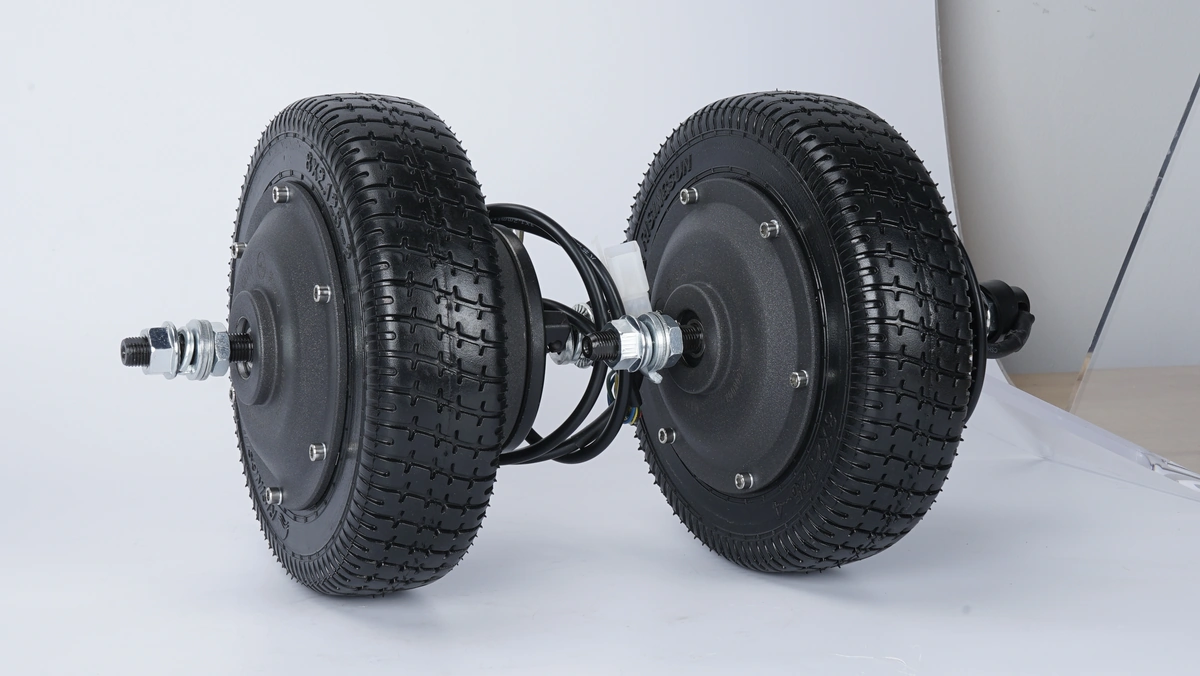Dual-hub motors are an innovative propulsion system. In this article, we will explore the technical aspects, advantages, and applications of dual-hub electric motors for skateboards.
Introduction to Dual Hub Motor Skateboards
Dual Hub Motors are compact electric motors integrated into the wheels of a skateboard. A dual hub motor skateboard is equipped with two electric motors housed within the skateboard's rear wheels. Unlike traditional electric skateboards that use belt-driven systems, hub motors integrate the motor directly into the wheel, eliminating the need for external components like belts or chains. This design not only streamlines the skateboard's aesthetic but also enhances its performance and reliability.
The Mechanics of Hub Motors
To understand the appeal of dual hub motors, it's crucial to grasp their operating principles. Each hub motor consists of a rotor (the wheel itself) and a stator (fixed inside the wheel). When electricity flows through the stator's coils, it creates a magnetic field that pushes against the permanent magnets in the rotor, causing it to spin. This direct drive system results in efficient power transfer and instant torque application, critical for acceleration and hill climbing.

Components and Design
Dual Hub Motors consist of several key components:
- Motor: Each wheel is equipped with a brushless electric motor, usually ranging from 500 to 1000 watts, depending on the desired power and speed.
- Stator: The stator is a stationary part of the motor that contains the windings. It interacts with the rotor to produce rotational motion.
- Rotor: The rotor is the rotating part of the motor, connected to the wheel. It spins around the stator when powered, generating the driving force.
- Electronics: Dual Hub Motors require an electronic speed controller (ESC) to regulate the power supply and control the motor's speed and direction.
Advantages of Dual Hub Motors
- Efficiency and Power: With two motors, dual hub systems distribute the workload, enhancing the skateboard's power and efficiency. This setup improves battery life, range, and acceleration, providing a more enjoyable ride.
- Enhanced Control: Each motor can be independently controlled, enabling precise maneuverability and stability while riding.
- Stealth and Aesthetics: Dual hub motors are almost invisible to the untrained eye, preserving the classic skateboard look. The absence of external mechanical parts also reduces noise, offering a silent, seamless ride.
- Low Maintenance: Without belts or chains that wear out and require regular adjustment or replacement, dual hub motor systems demand significantly less upkeep, making them more user-friendly and cost-effective in the long run.
- Regenerative Braking: Many dual hub motor skateboards feature regenerative braking, which recaptures energy during deceleration and feeds it back to the battery, subtly extending the ride's range.
Performance and Ride Experience
Dual Hub Motors significantly enhance the performance and ride experience of skateboards:
- Speed: With powerful motors, Dual Hub Motor skateboards can reach impressive speeds, typically ranging from 25 to 35 mph (40 to 56 km/h), depending on the motor specifications.
- Range: The range of Dual Hub Motor skateboards can vary, typically between 10 to 20 miles (16 to 32 km), depending on factors such as battery capacity, rider weight, terrain, and speed.
- Smooth Acceleration: Dual Hub Motors provide smooth and responsive acceleration, delivering an exhilarating riding experience.
- Hill Climbing: The increased power of Dual Hub Motors enables effortless climbing of steep inclines, making them ideal for urban commuting and exploring hilly areas.
Technical Considerations
When choosing or evaluating a dual hub motor skateboard, several technical aspects warrant attention:
- Motor Power: Typically measured in watts (W), the motor power influences the skateboard's speed and hill-climbing ability. Higher wattage equates to more power, but it's essential to balance this with battery life considerations.
- Battery Capacity: Expressed in watt-hours (Wh), the battery capacity determines the skateboard's range. A larger battery extends the ride distance but increases the board's weight and charging time.
- Wheel Size and Material: The integration of motors into the wheels influences their size and material composition. Larger wheels offer better stability and ride comfort, while the material affects grip and durability.
- Speed and Range: The combination of motor power and battery capacity dictates the skateboard's top speed and maximum range. These factors vary widely across models, catering to different rider preferences and use cases.
Challenges
- Cost: The advanced technology and components of dual hub motor skateboards make them more expensive than traditional and single-motor electric boards.
- Weight: The addition of a second motor and potentially larger battery increases the overall weight, potentially making the skateboard less portable.
Conclusion
Using dual-hub motors on electric scooters can help improve the performance of the scooters and provide riders with a better experience.

Leave A Comment